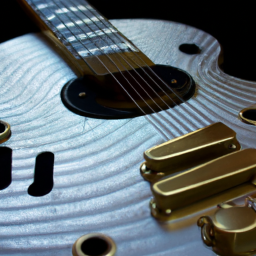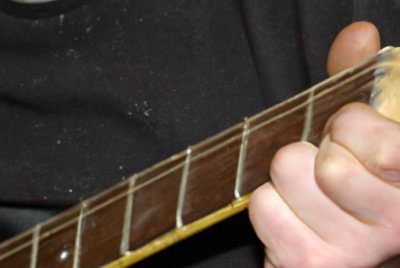Who Were The 4 Early Electric Guitar Innovators?
Have you ever wondered about the Early Electric Guitar Innovators who revolutionized the world of music with their innovative designs of the electric guitar? From the roaring 1920s to the swinging 1950s, a group of remarkable individuals shaped the future of music by experimenting with electric amplification. Through their ingenuity and determination, they laid the foundation for the iconic instrument we know and love today. Let’s take a closer look at the early innovators of the electric guitar and their contribution to the world of music.
Early Development of the Electric Guitar
The electric guitar has become an iconic instrument in the world of music, shaping the sound of countless genres. But have you ever wondered about its origins? Who were the early innovators that paved the way for this revolutionary instrument? In this article, we will delve into the fascinating story of the early development of the electric guitar, exploring the invention of the first electric guitar, the early electric guitar designs, the evolution of sound, the rise of electric guitar innovators, and the expansion of electric guitar usage.
The Invention of the First Electric Guitar
In the early 20th century, a revolutionary invention took place that would change the course of music forever: the electric guitar. The work of various inventors and innovators contributed to the creation of the first electric guitar, but one name stands out – George Beauchamp. Beauchamp, along with his partner Adolph Rickenbacker, played a crucial role in the development of the electric guitar.
In the late 1920s, Beauchamp and Rickenbacker founded the Ro-Pat-In Corporation, later known as Rickenbacker. This corporation was dedicated to creating musical instruments with amplified sound. Together, they experimented with different designs and technologies, ultimately leading to the development of the Electro-Spanish models. These were the first commercially successful electric guitars, featuring a hollow body and a magnetic pickup.
The Early Electric Guitar Designs
One of the earliest electric guitar designs that emerged was the “Frying Pan” guitar, patented by George Beauchamp and Adolph Rickenbacker in 1937. Its unique shape featured a round aluminum body, resembling a frying pan, hence the name. The Frying Pan guitar set the stage for future innovations in electric guitar design.
Another significant development came from Gibson in the form of the ES-150. Introduced in 1936, the Gibson ES-150 was the company’s first commercially successful electric guitar. It featured a hollow body design and a single-coil pickup, which gave it a distinctive warm and resonant tone. The ES-150 played a pivotal role in popularizing the electric guitar and paved the way for future designs.
Around the same time, another innovator emerged – Rickenbacker. They introduced lap steel guitars, designed to be played horizontally on the lap, and they quickly gained popularity. These lap steel guitars utilized a unique design with a raised nut and a metal slide, allowing players to achieve a distinct slide guitar sound.
The Evolution of Sound
As electric guitars continued to evolve, so did the sound they produced. One significant development was the introduction of pickups and amplification. Pickups use magnets to convert string vibrations into electrical signals, which are then sent to an amplifier for amplification. This process significantly increased the volume and allowed for greater tonal control, revolutionizing the instrument’s possibilities.
The influence of jazz music cannot be overlooked in the evolution of electric guitar sound. Jazz guitarists embraced the instrument’s flexibility and utilized its unique timbre to push the boundaries of their genre. Artists like Charlie Christian, who played Gibson ES-150 with a pickup, demonstrated the electric guitar’s potential in jazz music.
The emergence of the rock and roll era in the 1950s also played a vital role in shaping the sound of the electric guitar. With its high-energy and rebellious nature, rock and roll required a powerful and dynamic instrument. Artists like Chuck Berry and Scotty Moore pushed the boundaries of what the electric guitar could do, incorporating bluesy licks and energetic solos that captivated audiences.
The Rise of Electric Guitar Innovators
In the mid-20th century, several innovators made significant contributions to the electric guitar’s design and sound. One of the most influential figures was Les Paul. Known for his virtuosic guitar playing and innovative spirit, Les Paul revolutionized the electric guitar with his unique ideas.
Les Paul collaborated with Gibson to create the iconic Gibson Les Paul Model, which remains one of the most iconic electric guitars to this day. The Les Paul Model featured a solidbody design, providing improved sustain and feedback resistance. Its warm and rich tone, along with its versatile electronics, made it a favorite among guitarists across genres.
Leo Fender was another visionary who left an indelible mark on the electric guitar. In 1950, he introduced the Fender Telecaster, the world’s first commercially successful solidbody electric guitar. The Telecaster’s simple yet effective design, with its bright and twangy tone, appealed to a wide range of players.
Fender continued his string of innovations with the introduction of the Fender Stratocaster a few years later. The Stratocaster’s contoured body, three single-coil pickups, and whammy bar allowed for greater tonal versatility and expressive playing. Its sleek design and vibrant sound made it a favorite among blues, rock, and jazz guitarists.
Gibson and Gretsch also made significant contributions during this era. Gibson introduced the ES-335, a semi-hollow electric guitar that combined the warmth of a hollow body with the sustain of a solidbody. This innovative design earned the ES-335 a special place in the hearts of guitarists, as it offered a wide range of tonal possibilities.
Gretsch made its mark with the Duo Jet, an electric guitar known for its twangy sound and stylish design. The Duo Jet was favored by many rockabilly and country guitarists, adding a distinctive flavor to their music.
The Expansion of Electric Guitar Usage
With the rise of rock and roll, the electric guitar’s popularity skyrocketed, leading to its widespread usage across various musical genres. Rock and roll bands like The Beatles and The Rolling Stones brought the electric guitar to the forefront of popular music, captivating audiences worldwide with their electrifying performances.
The influence of blues and country music also played a significant role in expanding the electric guitar’s usage. Blues guitarists such as B.B. King and Muddy Waters used the electric guitar to express raw emotion and create a soulful sound that resonated with listeners. In country music, players like Chet Atkins introduced fingerpicking techniques and sweet, melodic tones that defined the genre.
Perhaps one of the most impactful moments in the history of the electric guitar came with the British Invasion bands in the 1960s. The Beatles, with their Epiphone Casino guitars, captivated the world with their catchy melodies and innovative songwriting. Eric Clapton, known for his work with Cream and later as a solo artist, became synonymous with the Gibson Les Paul, showcasing its versatility and power.
The Rolling Stones and The Who are famous for their energetic, rebellious sound. They helped make the electric guitar key in rock music. Keith Richards plays with a distinctive sound. He uses a gritty Telecaster. Pete Townshend is also well-known. He gives explosive performances. He uses a Gibson SG. Both of them have expanded what an electric guitar can do.
Conclusion
The early development of the electric guitar was a journey marked by innovation and creativity. From the inventors of the first electric guitar to the rise of electric guitar innovators, each milestone contributed to the evolution of the instrument and the sound it produced. As electric guitars continued to evolve, they became central to the music of various genres, captivating audiences and shaping the course of popular music. The electric guitar is a testament to the power of human ingenuity and the ability of an instrument to transcend boundaries and bring people together through music.




